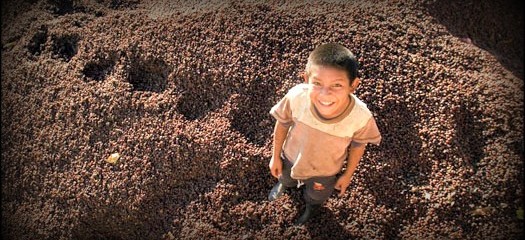21
Feb 2014
Where did the product come from?
A certification scheme won’t work – data should move through the supply chain as efficiently as the goods themselves
How did the everyday things that we buy get here, and from where? It seems a simple enough question and yet for the vast majority of things we buy it is completely unanswerable. The label may say “made in China”, but normally that’s just where the bits and pieces were put together. So where do the bits come from, and how do we find out?
Why should we care?
The total value chain (the sequence of steps necessary to turn primary products into finished goods) for most products is truly global, providing opportunities but also creating problems. What happens when you want to know that the trees that were used to make the paper you want to buy were legally harvested? Or the minerals used to make that latest electronic device you want are “conflict free”? In both these cases it is no longer just about consumer preference or brand promise: there are laws requiring whoever is selling the products to know the answers, and penalties if they don’t.
Despite those laws, some mining activities continue to fund conflicts and illegal harvesting of forests is reportedly increasing. The questions are endless. How much water and energy was used? How were the people and animals treated? In short, are these products sustainable?
Heard it on the grapevine
Today, most companies seek the answer to some of these questions – largely relying on their suppliers to tell them the answers. That seems logical enough, but in many cases the supplier simply doesn’t know. There are too many steps in the total value chain and the supplier is only responsible for a fraction of them.
What is really intriguing is that in many cases, the customer knows that the supplier doesn’t really have the answer but asks them for it anyway. Meanwhile, the supplier knows that the customer doesn’t know the answer either, and so they are free to respond with anything – especially if they know the range of answers the customer was hoping for. The result: lots of inaccurate, unverifiable information and no appreciable change in practice.
Every year the entire Uzbek cotton harvest gets sold, but doesn’t apparently make it through to consumers. The number of illegally harvested trees goes up every year, but none of them end up in the products in the shops. Labelling organisations, such as Fair Trade, FSC and Rainforest Alliance, are all growing and this is at least partly in response to the need for better value chain management. From my extensive work in this sector, it is clear that even within these networks it is not possible to accurately describe the total value chain.
What’s the answer?
Many organisations will already have an appreciation of how difficult it can be to collect accurate, verifiable information from their global supply chains. It seems unlikely that there will (or should) be an independently certified labelling scheme for single issue or product.
Any answer to this problem will need to provide a mechanism for data to move through the global value chain as efficiently as the physical goods themselves. Businesses throughout the chain should have an expectation that they will collect, manage and transmit this data in a format their customers can use.
For more information please check SBE International
Source from: The Guardian
































April 23rd, 2014 4:15 /
The government should launch more regulations and provides more details of the origins of the products. Information regarding the production locations should be fully disclosed to the public. And the local government should ban those illegal production.